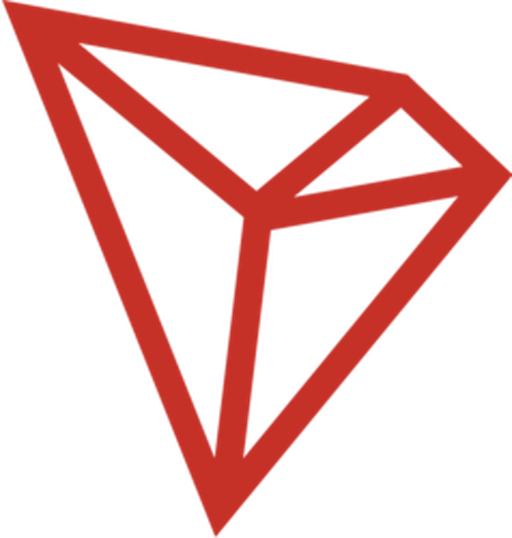TRON vs Polygon Bridged USDT (Polygon) – Price, Market Cap & Performance Compared
Which coin performs better – TRON or Polygon Bridged USDT (Polygon)?
We compare the current price (0.33859 $ vs 1 $), market cap (32 049 758 410 vs 1 422 571 125) and all-time high (0.43129 vs 1.027).
Find out which one stands out right now!
TRON is currently trading at 0.33859 $, while Polygon Bridged USDT (Polygon) stands at 1 $. These cryptocurrencies differ not only in price but also in market presence.
The market cap of TRON is around 32 049 758 410, and Polygon Bridged USDT (Polygon) has about 1 422 571 125. Their respective all-time highs are 0.43129 for TRON and 1.027 for Polygon Bridged USDT (Polygon).
Daily trading volume and the 24h price change (0.77055 % vs -0.00260 %) also offer key insights.
Compare all metrics now and see which coin fits your investment strategy best!
TRON
TRON is a blockchain-based platform that aims to decentralize the digital entertainment industry, providing a space where creators can share content directly with consumers without intermediaries. It is known for its high throughput, which allows for rapid processing of transactions and supports a wide range of decentralized applications. The platform's native cryptocurrency, TRX, facilitates transactions and smart contracts within its ecosystem, enabling seamless interaction between content creators and consumers.
more informationPolygon Bridged USDT (Polygon)
Polygon Bridged USDT is revolutionizing the way users leverage stablecoins within the Ethereum ecosystem, offering fast and cost-effective transactions. By bridging Tether to the Polygon network, it enhances liquidity and scalability, making it an attractive option for both traders and DeFi enthusiasts. As the demand for efficient decentralized finance solutions grows, Polygon Bridged USDT positions itself as a key player in meeting these challenges.
more information

|

|
|
|
|
General Information |
|
|---|---|
|
Title
TRON
|
Title
Polygon Bridged USDT (Polygon)
|
|
Symbol
trx
|
Symbol
usdt
|
|
Whitepaper
-
|
Whitepaper
-
|
|
Website
|
Website
|
|
Community
-
|
Community
-
|
|
Last Updated
2025-09-24 23:29
|
Last Updated
2025-09-24 23:29
|
Price Data |
|
|---|---|
|
Current Price $
0.33859 $
|
Current Price $
1 $
|
|
High 24h
0.33942 $
|
High 24h
1 $
|
|
Low 24h
0.33517 $
|
Low 24h
0.99985 $
|
|
Price Change 24h
0.00259 $
|
Price Change 24h
-0.00003 $
|
|
Price Change % 24h
0.77055 %
|
Price Change % 24h
-0.00260 %
|
Market Data |
|
|---|---|
|
Market Cap
32 049 758 410
|
Market Cap
1 422 571 125
|
|
Total Volume
591 010 971
|
Total Volume
27 715 913
|
|
Market Cap Change 24h
221 067 939
|
Market Cap Change 24h
-2 015 972
|
|
Market Cap Change % 24h
0.69456 %
|
Market Cap Change % 24h
-0.14151 %
|
|
Return on Investment (ROI)
17 720 %
|
Return on Investment (ROI)
-
|
Supply and Availability |
|
|---|---|
|
Circulating Supply
94 665 793 494
|
Circulating Supply
1 422 367 319
|
|
Total Supply
94 665 987 437
|
Total Supply
1 422 367 319
|
|
Max Supply
-
|
Max Supply
-
|
Historical Data |
|
|---|---|
|
All Time High (ATH)
0.43129
|
All Time High (ATH)
1.027
|
|
ATH Change %
-21.49120 %
|
ATH Change %
-2.59514 %
|
|
ATH Date
2024-12-04 00:10
|
ATH Date
2024-04-14 06:51
|
|
All Time Low (ATL)
0.00180
|
All Time Low (ATL)
0.94593
|
|
ATL Change %
18 666 %
|
ATL Change %
5.73022 %
|
|
ATL Date
2017-11-12 00:00
|
ATL Date
2024-12-05 22:30
|
TRON
The Rise of TRON: A Deep Dive into the Blockchain Giant
TRON (TRX) has emerged as one of the most formidable players in the cryptocurrency space, known for its ambitious goal of creating a decentralized internet. In this article, we explore TRON's development, advantages, challenges, historical performance, and future outlook.
Understanding TRON: The Vision and Technology
TRON was launched by Justin Sun in 2017 with the vision of building a decentralized internet platform that empowers developers to create DApps (Decentralized Applications) without relying on central authorities. The platform uses blockchain technology to ensure transparency, security, and peer-to-peer sharing.
TRON's architecture is divided into several layers that ensure its robustness, including the Storage Layer, Core Layer, and Application Layer. The use of a Delegated Proof of Stake (DPoS) consensus mechanism facilitates high throughput and scalability, which are crucial for accommodating millions of daily transactions.
Advantages of TRON
One of TRON's key strengths is its high scalability and low transaction fees, making it attractive for developers and end-users. The fast transaction speeds and ability to support a large number of transactions per second (TPS) are crucial as the platform grows.
TRON's acquisition of BitTorrent, the world's largest decentralized file-sharing protocol, also strengthens its ecosystem. The integration of BitTorrent has the potential to improve TRON's user base and diversify its use cases.
Challenges and Criticisms
Despite its strengths, TRON has faced criticism for its centralized governance structure, which some argue contradicts the decentralized ethos of blockchain technology. There have been concerns about the concentration of power among the super representatives who govern the network's operations.
Furthermore, TRON has been scrutinized for its marketing strategies and fast-paced growth, with some critics questioning the authenticity of certain partnership announcements made in its early stages.
TRON's Historical Performance
Since its inception, TRON has experienced significant growth. Its Initial Coin Offering (ICO) was in September 2017, and since then, the coin has evolved substantially. TRON reached an all-time high of $0.231673 on January 5, 2018, during the crypto boom but has since seen fluctuations with current prices lower.
Despite the volatility, TRON has shown resilience with its current price at approximately $0.163, and an impressive ROI of around 8483.66%. The price has weathered market fluctuations and indicated strong potential for sustained growth.
Forecasting the Future: What Lies Ahead for TRON?
Looking forward, TRON's future will likely depend on its ability to expand its ecosystem and increase adoption among developers and users. The focus on DeFi (Decentralized Finance) and NFTs (Non-Fungible Tokens) represents a potential area of expansion, especially given the rising popularity of these sectors.
Moreover, ongoing enhancements to the platform's infrastructure and strategic partnerships will be key to maintaining a competitive edge. If TRON can continue to innovate and address criticisms related to decentralization, it has the potential to remain a major player in the blockchain industry.
Overall, TRON represents an intriguing blend of innovation and ambition, with the capacity to drive significant change in the realm of digital content creation and distribution. Its ability to fulfill its long-term vision will hinge on strategic decisions and market dynamics in the coming years.
Polygon Bridged USDT (Polygon)
Introduction to Polygon Bridged USDT
Polygon Bridged USDT, commonly referred to as USDT on the Polygon network, represents a vital component in the expanding ecosystem of decentralized finance (DeFi). As a stablecoin, it is pegged to the US Dollar, providing users with a reliable medium of exchange and store of value while taking advantage of the scalability and lower transaction costs that Polygon offers. This article delves into the characteristics, advantages, and challenges associated with Polygon Bridged USDT, as well as its historical performance and future prospects.
Understanding the Basics of Polygon Bridged USDT
Polygon, formerly known as Matic Network, is a Layer 2 scaling solution for Ethereum, designed to enhance transaction speeds and reduce fees. The bridged USDT on Polygon leverages these benefits, ensuring seamless transactions across the network. As of now, the price of USDT on Polygon hovers around $0.999, closely mimicking its fiat counterpart while offering the efficiency of blockchain technology.
Advantages of Polygon Bridged USDT
One of the key advantages of Polygon Bridged USDT is its ability to facilitate faster and cheaper transactions compared to using USDT on the Ethereum mainnet. This is particularly appealing to traders and investors engaging in high-frequency trading or those wanting to make micropayments.
Moreover, the integration of USDT into the DeFi landscape of Polygon enables users to access various liquidity pools, lending platforms, and decentralized exchanges, fostering a thriving environment for yield farming and trading strategies.
Challenges and Risks Associated with Polygon Bridged USDT
Despite its advantages, Polygon Bridged USDT is not without its challenges. As with any stablecoin, it is essential to prioritize transparency and trustworthiness. Users need to be cognizant of the potential risks associated with the underlying technology, including smart contract vulnerabilities and platform-specific issues.
Additionally, the reliance on a centralized issuer, Tether, raises concerns over regulatory scrutiny and operational sustainability, which could impact USDT's long-term stability and its value as a reliable stable asset.
Historical Performance and Market Trends
Looking at the historical performance of Polygon Bridged USDT, the coin has maintained its peg very closely, with its all-time high reaching $1.027 on April 14, 2024, and its all-time low at $0.945933 in December 2024. Over time, gradual adoption and increased usage within the DeFi space have contributed to its current market capitalization of approximately $845 million and a circulating supply of around 845 million coins.
Future Prospects of Polygon Bridged USDT
The future outlook for Polygon Bridged USDT is intertwined with the growth of the Polygon network and the overall DeFi sector. As more users and developers join the ecosystem, the demand for stablecoins like USDT is likely to increase, potentially leading to further price stabilization.
Moreover, with ongoing developments in scalability solutions and interoperability, it is expected that Polygon will continue to attract significant institutional and retail interest, boosting the utility and adoption of Bridged USDT in various applications.
Conclusion
Polygon Bridged USDT represents a pivotal innovation in the cryptocurrency landscape, offering users the benefits of a stablecoin combined with the efficiencies of layer 2 scaling solutions. While it carries inherent risks, its integration within the expanding DeFi ecosystem positions it well for future growth and stability. As the market continues to evolve, Polygon Bridged USDT is poised to play a critical role in facilitating seamless transactions and promoting financial inclusivity within the blockchain space.

